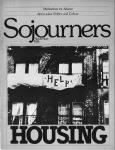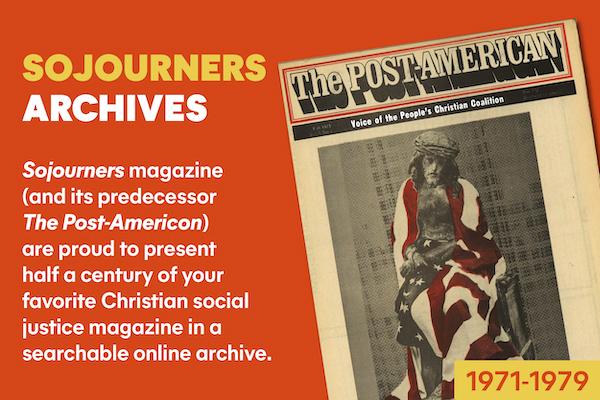In this observer's judgment, the anti-nuclear movement provides just about the best current example of what a potentially successful U.S. radical movement might look like.
I wasn't the only one who reached this conclusion during the first National "No-Nukes" Strategy Conference at the University of Louisville in August. After four days of almost non-stop discussion, others among the 300 delegates from anti-nuclear power groups around the country caught glimpses of how a renewed mass movement might operate.
It is much too early to make grandiose claims for the anti-nuclear movement.
Other movements have looked as promising and then faded. But at Louisville we saw some of the anti-nuclear movement's potential for building and sustaining a mass base.
Why do I think of the anti-nuclear movement as a model?
Because it has thus far cultivated what I consider the central, paradoxical characteristic of authentic North American insurgencies: they are both radical and conservative at the same time.
Why do I say a successful native movement must be both at once?
Because that, in my judgment, is the nature of the beast we're working with: North Americans are largely a conservative lot. They believe in hard work, fair play, paying your own way, minimum government, family stability, organized religion, and stuff like that.
But these Americans are ready to do radical things to protect such values against threats, real or imagined. That's how the Establishment has sold us the various wars we have fought. But it is also how we managed to have a revolution a while back. And North Americans have shown that they are just as ready to fight Big Business as they are Big Government (or Big Communism) if either gets in the way of their essential conservatism.
The movements that have succeeded against the Establishment managed to combine radical programs and tactics with these conservative values. Dr. Martin Luther King Jr., for instance, won his biggest victories over the constitutional right of black people to vote; when he started talking about the right of black children to eat, which isn't in the Constitution, he ran into trouble.
Similarly, about 50 years ago a bunch of radical North Dakota farmers forced the creation of the only state-owned bank in the U.S. as a means of liberating themselves from the greedy clutches of banks and grain companies in Minneapolis and Chicago. This specimen of U.S. socialism is still in business; the Bank of North Dakota has been a big success: it has in fact enabled a couple generations of the state's farmers to maintain their state as the most rural, and among the most thoroughly conservative, in the nation.
How does the anti-nuclear movement fit this model?
Most any way you want to look at it. Its objectives, for starters, are All-American, almost Jeffersonian in their emphasis on self-reliance, decentralized power, and protection of established civil liberties.
The movement is even more characteristic in its structure and style of decision-making. This is where form and content run together for radicals; and the outcome, which is sort of a litmus test of their potential, has generally been bad in the last half-century. The Marxist dream of a unified workers' army led to victory by an enlightened vanguard has typically ended in the destruction of a movement's internal democracy in order to preserve the vanguard's leading position. And it in turn became a bureaucratic elite which has often been as indifferent as the bosses.
This outcome then produced one of two others: either the troops deserted and the movement collapsed like a leaky balloon, or it was absorbed into the Establishment, whose essential values its ex-radical leaders had come to practice, if not preach.
The anti-nuclear movement's key cadre, conscious of this history, has been working to form a genuine alternative to this largely discredited kind of leftism. And they have done so by adapting conservative norms of decentralism in structure and the ultra-democratic mode of consensus in decision-making, which requires near-unanimity before action can be taken.
The Louisville conference exemplified this approach: delegates presented and debated more than 120 proposals for action, ranging in scope from local petition efforts to grand scenarios for a series of huge national actions culminating in a massive nonviolent occupation of Washington, D.C., in 1980.
To a group like the Socialist Workers Party - whose speakers were politely listened to but didn't find many converts at Louisville - the proper procedure would have been to vote on the various proposals, taking the winners as the basis for the party line, around which the vanguard would then rally the troops. But at this conference even the suggestion of a vote would have been rejected out of hand. Such decisions were for local groups to make first; then the decisions could be reflected through whatever larger structures the groups freely chose to associate with.
It might sound, from this description, that nothing was accomplished at the conference. And to be sure, "the paralysis of analysis" is as serious a threat to groups operating this way as is Establishment repression.
But it is the movement's achievement that it has, thus far, managed to make the consensual techniques work: using such methods, it has mounted large, disciplined actions involving hundreds of arrests in half a dozen places around the nation: Barnwell, South Carolina; San Luis Obispo, California; Rainier, Oregon; Rocky Flats, Colorado; and of course Seabrook, New Hampshire.
The clear trend of debate in Louisville was that more such actions are on the way. There was almost universal support expressed for a series of actions this month to coincide with the fourth anniversary of the death of Karen Silkwood. Silkwood, a worker at an Oklahoma nuclear plant, was killed in a mysterious car crash in November, 1974, while she was on her way to meet a reporter with evidence of safety violations at her employer's plant. Many movement activists believe she was murdered, and the case has become an anti-nuclear cause celebre.
There was also wide support for the scenario, presented by the South Carolina-based Palmetto Alliance, proposing a series of national actions, culminating in a Washington occupation. A few delegates objected to it on principle; they believed it was a mistake to focus on, and thereby reinforce, the central government and its capital. But many more believed that by the time of the action - late 1980 - their groups would be experienced enough to handle the degree of central coordination they would require.
These particular debates were but the tip of the conference iceberg; there was a lot happening in Louisville. And not all of it was in classrooms; the anti-nuclear movement shares another characteristic of successful insurgencies in that it is fostering a lively culture.
While music can't replace strategy, it is generally the case that winning movements are singing movements. When the South's blacks broke into freedom songs before marching out to face the sheriffs, their voices shook the system of segregation as well as the rafters of their churches. Woody Guthrie wasn't kidding when he wrote on his guitar case, "This machine kills Fascists."
At Louisville, a workshop on the movement's music showed that it is generating a whole round of new songs, most of them good-natured and even funny as well as militant. Two groups, the Clamshell Alliance in New England and Oregon's Trojan Decommissioning Alliance, have published songbooks.
Delegates also sported a seemingly endless variety of decorated T-shirts, among them one sold by Washington state's Live Without Trident delegation. Trident is a huge, missile-launching nuclear submarine being built near Seattle. The T-shirt featured a richly condimented submarine sandwich, with the Trident nestled in a bed of tomatoes and lettuce like a huge hot dog, above the legend, "Hold the baloney." A movement that can laugh is a movement with a future.
What the future holds for this constituency is hard to predict. I can see two major challenges for it: first, that of keeping its process going in its de-centralist form as it gets bigger and broader in scope. In the Washington campaign proposal and other discussions at Louisville, I could already see the telltale signs of national ambitions on the part of some cadres. It will take really strong local discipline and structure to resist or control this growth of ambition. There are also plenty of temptations that will come from the mass media and outside political groups anxious to make use of the movement for their own purposes.
Actually, the anti-nuclear movement has handled the media and the heavies pretty well so far. More difficult will be the task of coalition-building with other insurgent groups. Coalition was a word that seemed to be on everyone's lips in Louisville; yet the workshops on coalition-building were singularly unproductive. This lack of result seemed to be reflective of the movement's social composition: a majority of the delegates were long of hair, young in years, and idiosyncratic in apparel.
Their hipness was accompanied by a parochialism that has thus far kept them largely isolated from other activist groups. One delegate told of visiting straight churches in Oregon, and finding among his friends there many who were very much against nuclear power; yet none of them, he reported, had ever had contact with the Trojan Decommissioning Alliance, which is one of the major action groups in the movement.
The delegates' dedication to their cause may well work to make coalition-building that much more difficult; many, I suspect, will have to learn the hard way that their issue could sound exotic to people who are hungry, and frivolous to the unemployed. Yet making such connections is probably the movement's most critical task. It is in the building of real alliances that promising groups like this one either graduate from being prototypes of successful insurgencies and begin to move toward becoming the real thing, or they don't.
None of this is meant to sound melodramatic. If some second American revolution is coming, it is probably a long way off, so there is time for trial and error education. For that matter, it could be so far off that success for the anti-nuclear movement might consist not only in stopping the transition to a plutonium economy, but passing on its accumulated capital of experience, discipline, and culture to a successor constituency that will carry on and expand its tradition in another generation.
After all, for almost 60 years now, people who wanted to change the course of American society have had to start largely from scratch again and again, as one movement after another self-destructed. To break out of this tiresome cycle, to give radical sons and daughters some footsteps to follow - in the finest conservative American style - may be the biggest contribution the anti-nuclear, or any other contemporary insurgency, could make.
Chuck Fager was a Sojourners correspondent and a free-lance writer residing in Arlington, Virginia when this article appeared.

Got something to say about what you're reading? We value your feedback!
